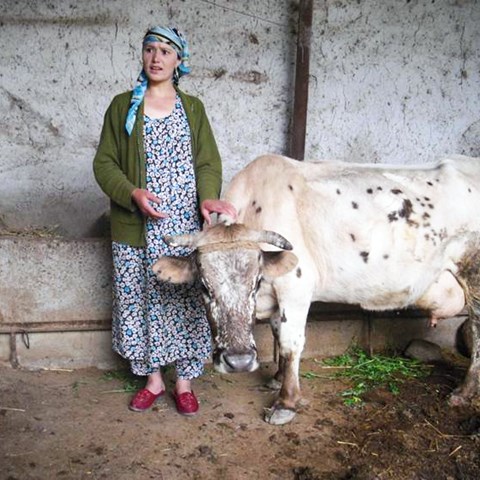Peri-urban livestock threat to women's health in Central Asia

The disease brucellosis, which can spread from animals to humans, is a threat to public health in poor countries where small-scale animal husbandry move into the fast-growing cities. This has been shown by investigations in Tajikistan made by Elisabeth Lindahl-Rajala from SLU. The infection was found to be common among dairy cattle, sheep and goats in the capital's outskirts and women are at high risk to become infected.
Brucellosis is a bacterial disease that infects animals and humans (a zoonosis) and is described by the WHO as a forgotten disease that primarily affects poor people in low income countries. People often become infected through consumption of unpasteurized dairy products from infected cows, sheep and goats, or when handling sick animals. To prevent people from becoming infected with the Brucella bacteria, one has to combat the disease in the animal population. This is difficult in countries with poor control of trade and imports of animals.
Elisabeth Lindahl-Rajala from SLU has in her doctoral studies examined the threat that brucellosis poses to public health in Tajikistan - a country bordering to Afghanistan and Uzbekistan among others.
- We have found that many cows, sheep and goats in the capital Dushanbe are infected with the Brucella bacteria, says Elisabeth Lindahl-Rajala. We also show that consumption of and trade in non-pasteurized dairy products is common in the city, which can pose a significant risk to public health.
The knowledge of brucellosis was very low among the surveyed households in the city and a majority wanted to learn more about the disease and how it can be prevented. Given the low level of knowledge, the widespread presence of risk behavior and the willingness of households to learn more, an information campaign should be directed at households with food-producing animals as part of the action in the future control programme against brucellosis in Tajikistan.
- Our results also suggest that women are at particular risk of brucellosis, since they to large extent take care of the tasks that may involve major risk of infection, such as milking cows and manage aborted fetuses and newborn calves, continues Elisabeth. This can also apply in many other low-income countries where women are often responsible for the animals in the family.
The results also indicate that the analytical methods used in monitoring programmes for brucellosis in many countries, including Sweden, may need to be supplemented by more sensitive analytical methods to not miss any Brucella-infected animals.
In Sweden the disease was eradicated in the animal population in the 1950s by, among other things, vaccinating cows meanwhile there was a new law that milk should be pasteurized. Brucellosis in food-producing animals is covered by the law on epizootic diseases and is notifiable.
More information
Elisabeth Lindahl Rajala
Department of Clinical Sciences
Swedish University of Agricultural Sciences
elisabeth.lindahl-rajala@slu.se, 018-67 11 34
Link to the thesis (pdf)
Information about brucellosis at the National Veterinary Institute